Abstract
ABSTRACT The results are presented of a study of the overall mortality and the incidence of cancer in male workers producing ferrosilicon and ferrochromium. Although the study included all present and retired workers employed in the factory for more than one year from 1928 until 1977 inclusive, the incidence of cancer in those 976 workers who started work before 1 January 1960 was studied in particular. Both the overall mortality and the incidence of cancer for all sites were lower than expected when compared with the national expected figures. Nine cases of lung cancer were found in the total population—seven in the ferrochromium subpopulation against expected rates of 3·1 and 1·8 when using national and local expected rates respectively as reference, and less than one expected case when using an internal reference population. A 1·5 O/E ratio was found for prostatic cancer in the whole study population. The results indicate that the increased incidence of lung cancer in the ferrochromium group has a causal relationship to occupational exposure. Perforation of the nasal septum was found in two present ferrochromium workers, and hexavalent chromium was found in the working atmosphere at the ferrochromium arc-furnaces during an industrial hygiene survey carried out in 1975. It is therefore concluded that the raised incidence of lung cancer is partly due to exposure to chromates. The results do not support the suggestion that exposure to chromic compounds entails a cancer hazard similar to that of exposure to hexavalent chromium compounds.
Full text
PDF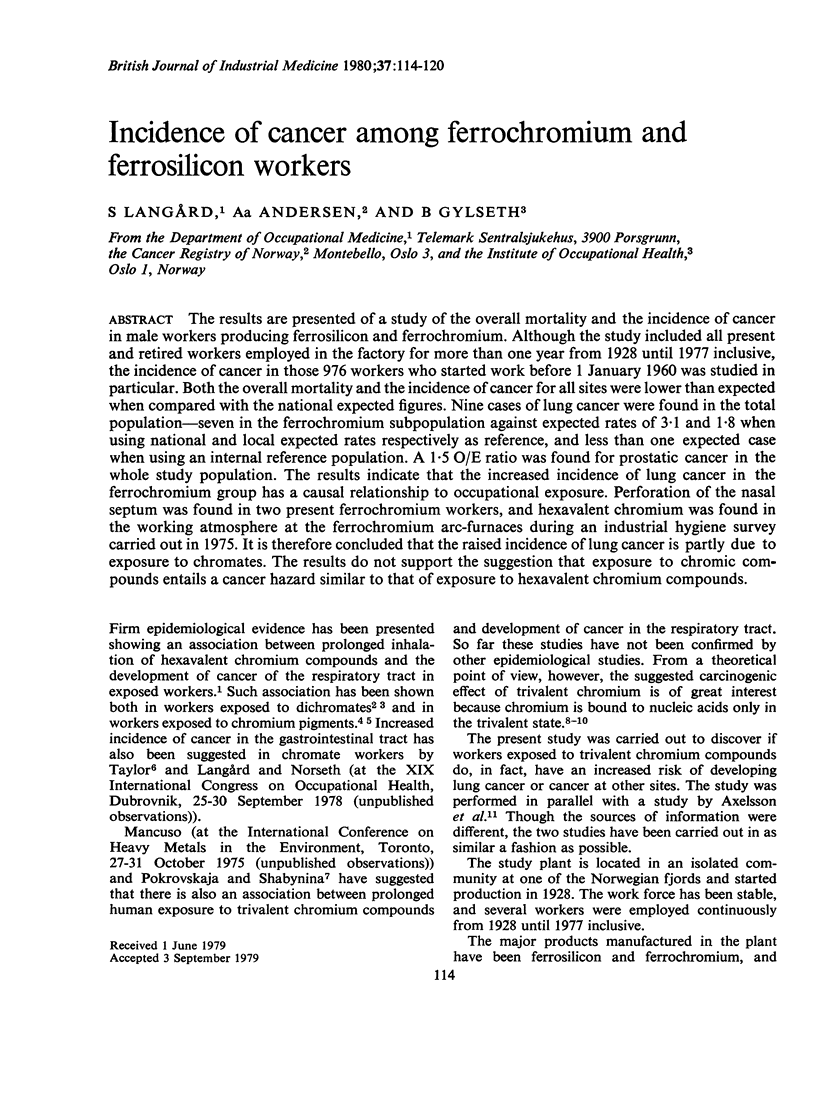
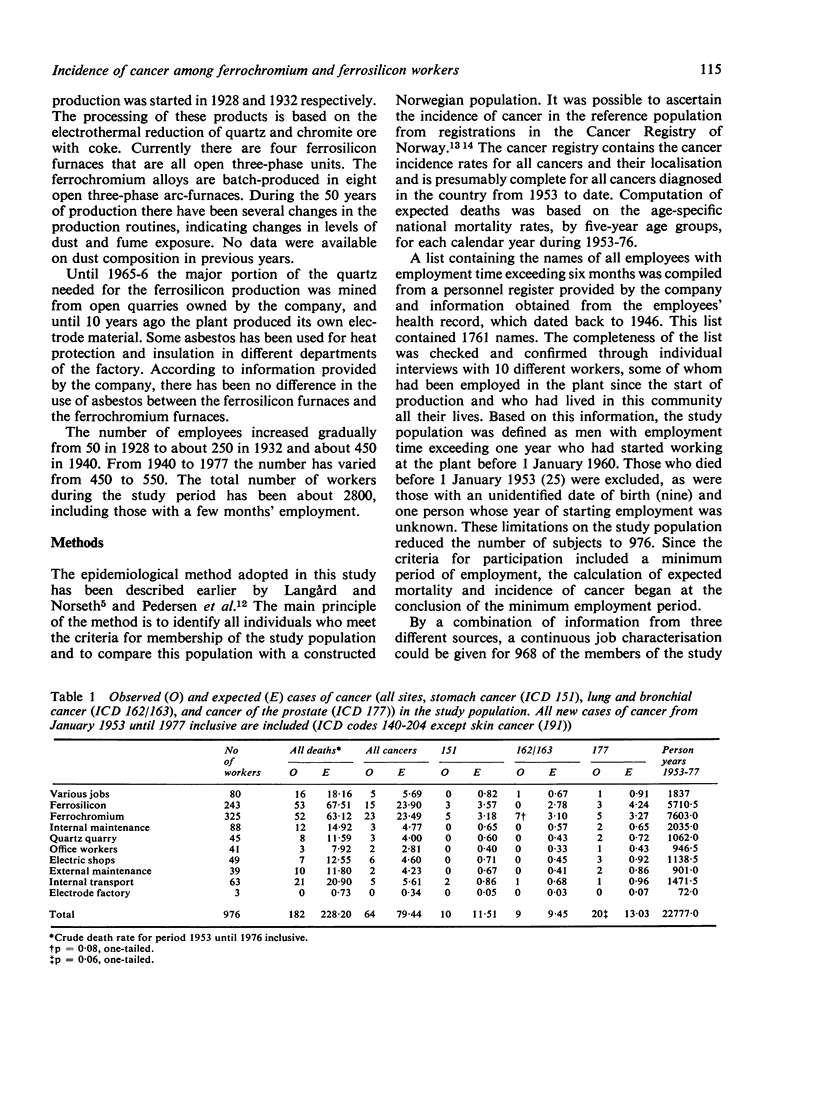
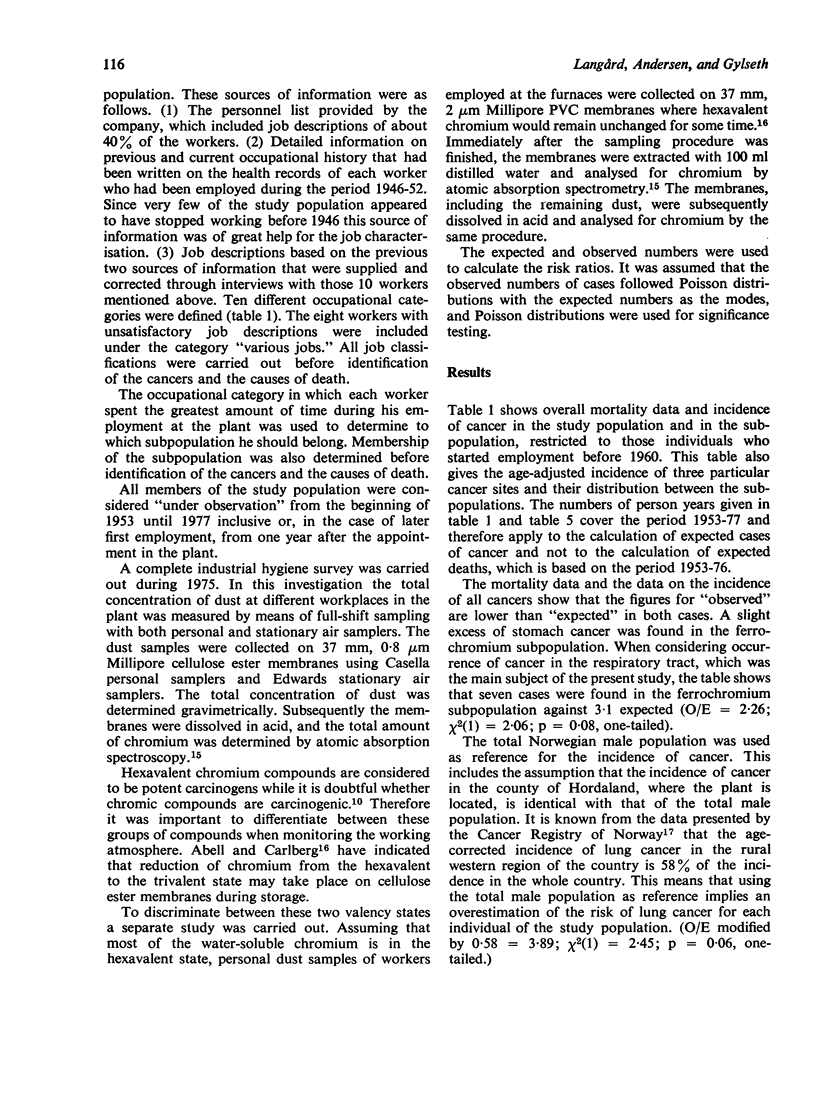
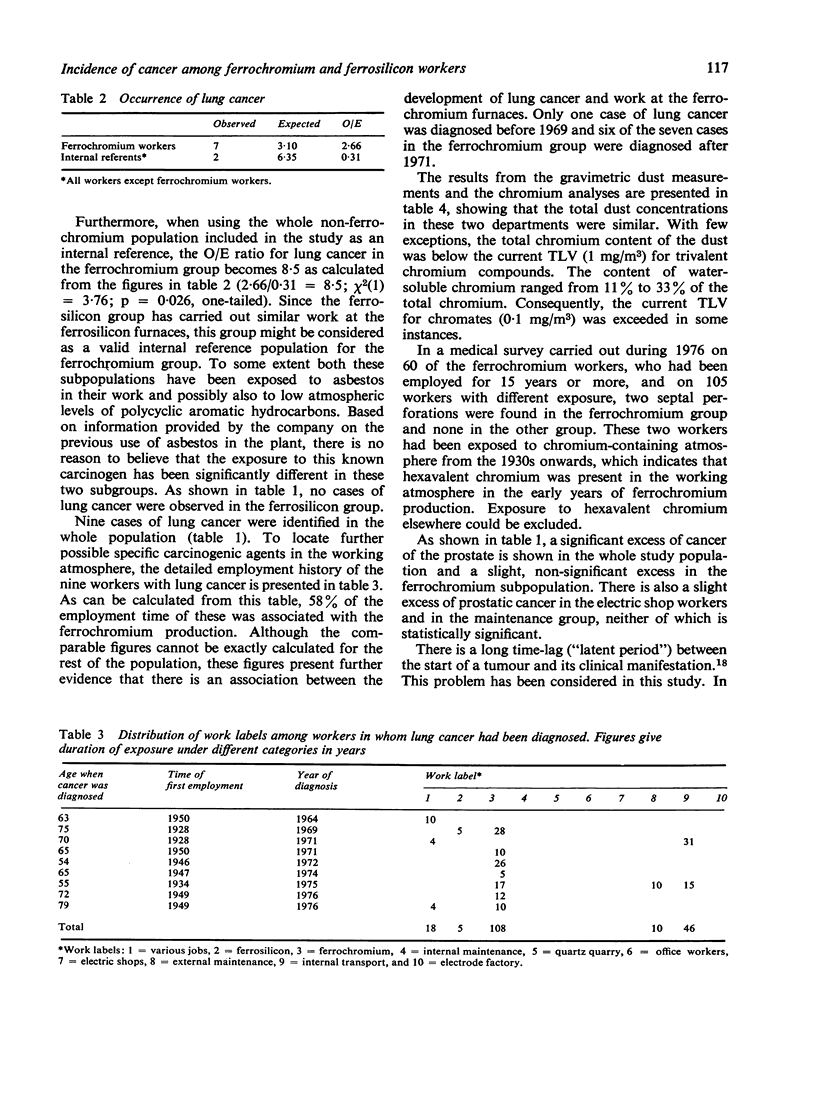
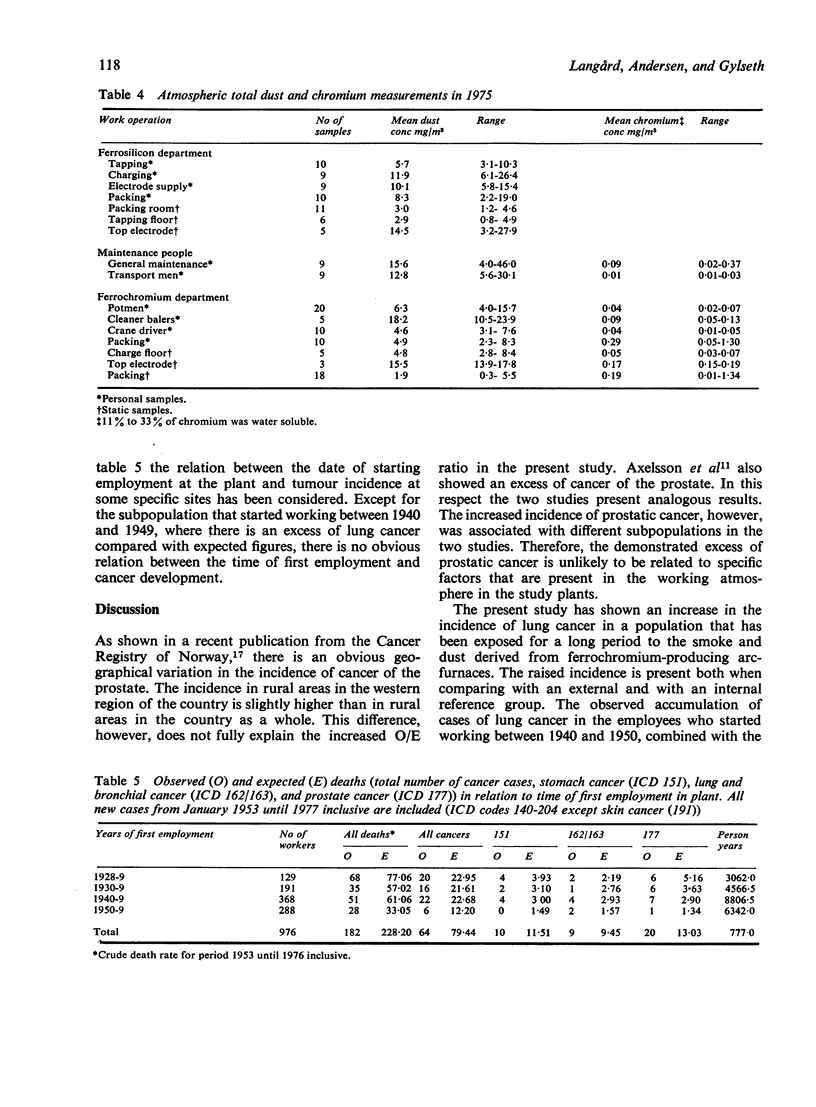
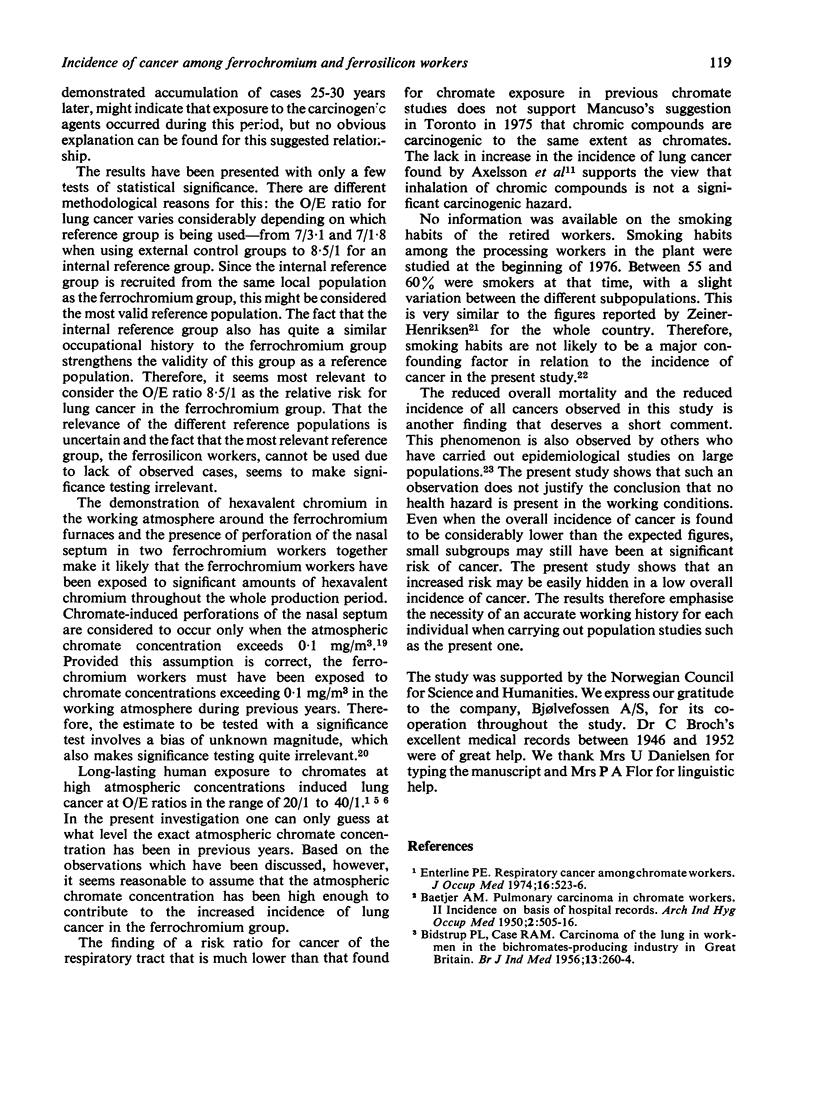
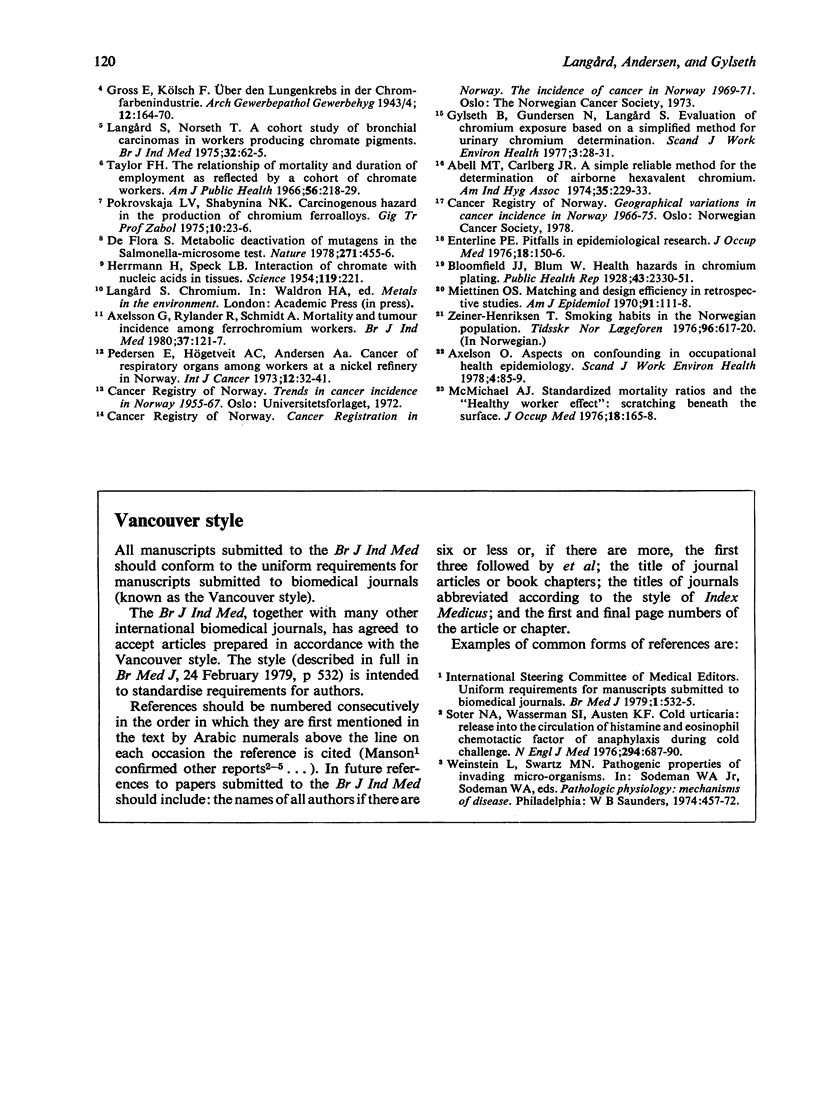
Selected References
These references are in PubMed. This may not be the complete list of references from this article.
- Abell M. T., Carlberg J. R. A simple reliable method for the determination of airborne hexavalent chromium. Am Ind Hyg Assoc J. 1974 Apr;35(4):229–233. doi: 10.1080/0002889748507027. [DOI] [PubMed] [Google Scholar]
- Axelsson G., Rylander R., Schmidt A. Mortality and incidence of tumours among ferrochromium workers. Br J Ind Med. 1980 May;37(2):121–127. doi: 10.1136/oem.37.2.121. [DOI] [PMC free article] [PubMed] [Google Scholar]
- BAETJER A. M. Pulmonary carcinoma in chromate workers. II. Incidence on basis of hospital records. AMA Arch Ind Hyg Occup Med. 1950 Nov;2(5):505–516. [PubMed] [Google Scholar]
- BIDSTRUP P. L., CASE R. A. Carcinoma of the lung in workmen in the bichromates-producing industry in Great Britain. Br J Ind Med. 1956 Oct;13(4):260–264. doi: 10.1136/oem.13.4.260. [DOI] [PMC free article] [PubMed] [Google Scholar]
- De Flora S. Metabolic deactivation of mutagens in the Salmonella-microsome test. Nature. 1978 Feb 2;271(5644):455–456. doi: 10.1038/271455a0. [DOI] [PubMed] [Google Scholar]
- Enterline P. E. Pitfalls in epidemiological research. An examination of the asbestos literature. J Occup Med. 1976 Mar;18(3):150–156. [PubMed] [Google Scholar]
- Enterline P. E. Respiratory cancer among chromate workers. J Occup Med. 1974 Aug;16(8):523–526. [PubMed] [Google Scholar]
- Gylseth B., Gundersen N., Langård S. Evaluation of chromium exposure based on a simplified method for urinary chromium determination. Scand J Work Environ Health. 1977 Mar;3(1):28–31. doi: 10.5271/sjweh.2794. [DOI] [PubMed] [Google Scholar]
- HERRMANN H., SPECK L. B. Interaction of chromate with nucleic acids in tissues. Science. 1954 Feb 12;119(3085):221–221. doi: 10.1126/science.119.3085.221. [DOI] [PubMed] [Google Scholar]
- Langård S., Norseth T. A cohort study of bronchial carcinomas in workers producing chromate pigments. Br J Ind Med. 1975 Feb;32(1):62–65. doi: 10.1136/oem.32.1.62. [DOI] [PMC free article] [PubMed] [Google Scholar]
- McMichael A. J. Standardized mortality ratios and the "healthy worker effect": Scratching beneath the surface. J Occup Med. 1976 Mar;18(3):165–168. doi: 10.1097/00043764-197603000-00009. [DOI] [PubMed] [Google Scholar]
- Miettinen O. S. Matching and design efficiency in retrospective studies. Am J Epidemiol. 1970 Feb;91(2):111–118. doi: 10.1093/oxfordjournals.aje.a121118. [DOI] [PubMed] [Google Scholar]
- Pedersen E., Hogetveit A. C., Andersen A. Cancer of respiratory organs among workers at a nickel refinery in Norway. Int J Cancer. 1973 Jul 15;12(1):32–41. doi: 10.1002/ijc.2910120104. [DOI] [PubMed] [Google Scholar]
- Soter N. A., Wasserman S. I., Austen K. F. Cold urticaria: release into the circulation of histamine and eosinophil chemotactic factor of anaphylaxis during cold challenge. N Engl J Med. 1976 Mar 25;294(13):687–690. doi: 10.1056/NEJM197603252941302. [DOI] [PubMed] [Google Scholar]
- Taylor F. H. The relationship of mortality and duration of employment as reflected by a cohort of chromate workers. Am J Public Health Nations Health. 1966 Feb;56(2):218–229. doi: 10.2105/ajph.56.2.218. [DOI] [PMC free article] [PubMed] [Google Scholar]
- Zeiner-Henriksen T. Røkevaner i den norske befolkning. Tidsskr Nor Laegeforen. 1976 Apr 20;96(11):617–620. [PubMed] [Google Scholar]


